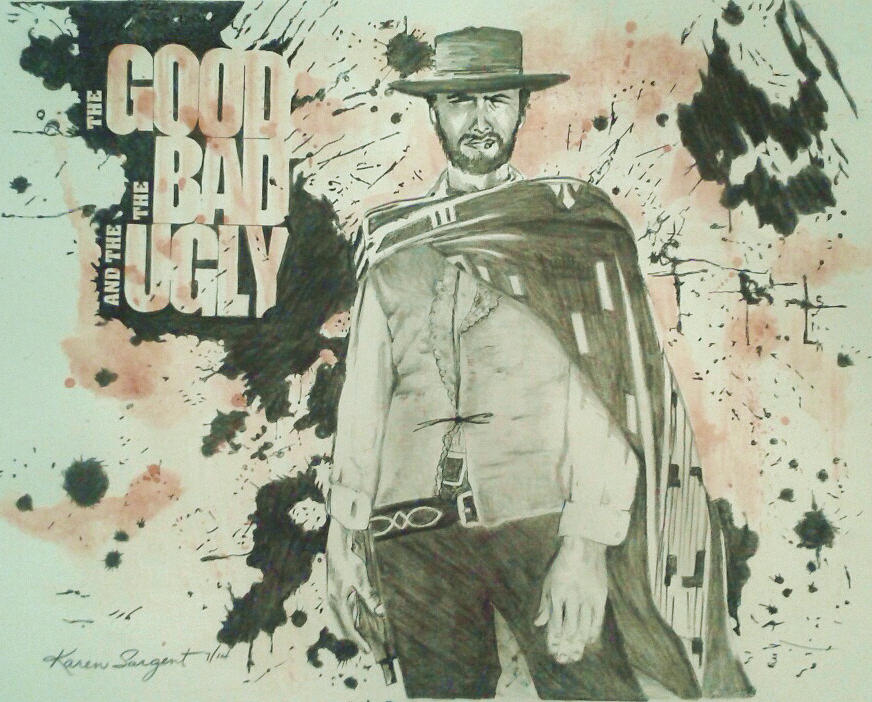


The cinematography is the first unmistakably impressive aspect of the film, made even more apparent with the bold decision to utilize zero dialogue during the initial ten minutes of footage. Long, lingering shots of vast mountainsides and breezy desert vistas inhabit much of the opening shot, while the beautiful contrast of extreme close-ups cutting to extreme faraway shots (mixed with the framing of characters positioned close to the camera, with open widescreen views of the countryside clearly visible in the background) is breathtakingly visionary. The famously recognizable theme foreshadows an epic Western unlike any seen before. Morricone’s stirring music will instantly sends jitters up the audience’s spine. During the midst of the Civil War, each of the three mercenaries is caught up participating in historical events as they struggle, oftentimes against one another, to get to the precious treasure. When Tuco and Blondie come upon the injured Carson, Tuco learns the name of the cemetery where the fortune is hidden and Blondie learns the name of the headstone under which it’s buried. Meanwhile, the villainous Angel Eyes (Lee Van Cleef) is hunting down Bill Carson, an Army soldier who stole $200,000 in gold.

The wanted outlaw Tuco (Eli Wallach) forms an uneasy partnership with Blondie (Clint Eastwood), in which the latter turns the former in to the authorities for a reward, only to free him before he is hung – so that they can repeat their bounty-hunting scam in the next town after pocketing the payment. Although it’s considered the third part to a trilogy, preceded by “A Fistful of Dollars” (1964) and “For a Few Dollars More” (1965), it technically does not contain the same characters and is not a continuation, though Clint Eastwood’s poncho-wearing “man with no name” retains identical costuming throughout the series. Packed with suspenseful showdowns, fiery gunfights, full-scale battles, and confidently ostentatious taunting in between, this imaginative actioner demonstrates incredibly obscure guidelines for the demarcation of good and evil, several of the most iconic sequences in cinema history, and Ennio Morricone’s unusual, unforgettable score. He quintessential and definitive Spaghetti Western, Sergio Leone’s “The Good, the Bad and the Ugly” is one of the most exciting and entertaining films ever made. Release Date: January 24th, 1968 MPAA Rating: Not Ratedĭirector: Sergio Leone Actors: Clint Eastwood, Eli Wallach, Lee Van Cleef, Luigi Pistilli, Rada Rassimov, Aldo Giuffre, John Bartho T Genre: Spaghetti Western Running Time: 2 hrs.


 0 kommentar(er)
0 kommentar(er)
